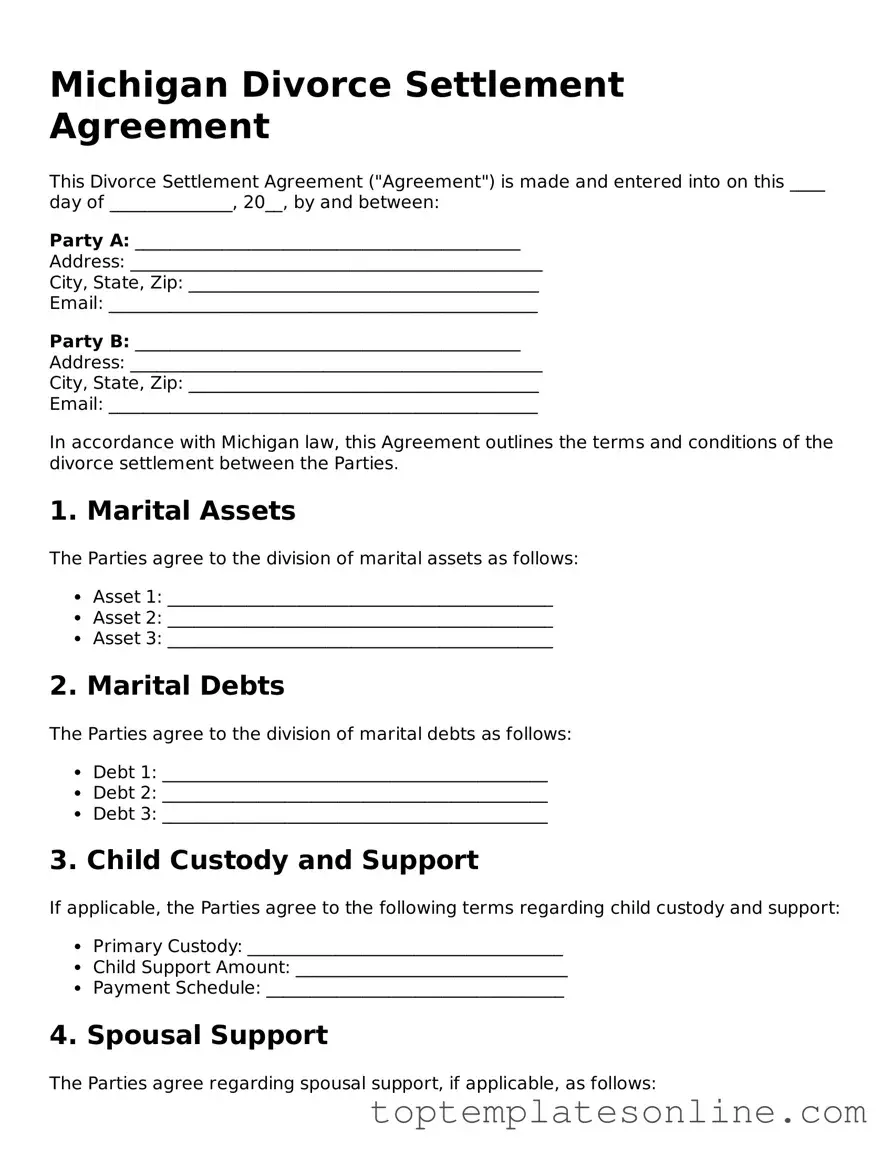Blank Divorce Settlement Agreement Template for Michigan State
The Michigan Divorce Settlement Agreement form is a legal document that outlines the terms and conditions agreed upon by both parties during a divorce. This form covers various aspects such as property division, child custody, and support arrangements. Completing this form is essential for ensuring that both parties have a clear understanding of their rights and responsibilities following the divorce.
Customize Divorce Settlement Agreement Here
